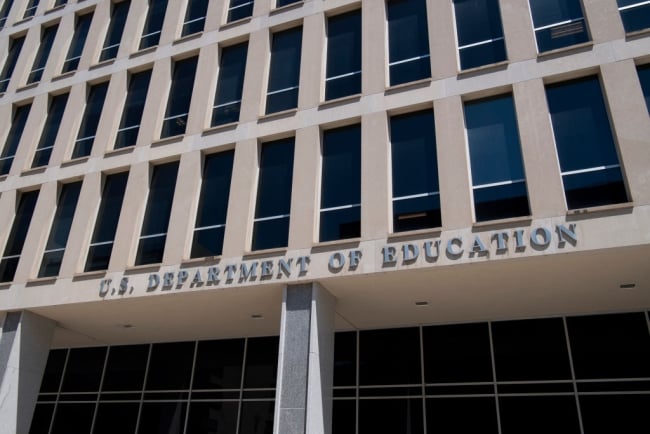You have /5 articles left.
Sign up for a free account or log in.

The education secretary would be able to determine if a borrower’s circumstances entitle them to debt relief under a new proposed plan.
Caroline Brehman/CQ-Roll Call Inc./Getty Images
Student loan borrowers likely to default and those experiencing hardship because of their loans could see their balances wiped out under the Biden administration’s latest debt-relief plan, though it’s not clear how many borrowers would be affected.
The plan, released Thursday, builds on the department’s work over the last six months to craft regulatory proposals that would offer debt relief to certain groups of borrowers. Those plans included borrowers who owed more than they initially borrowed or who have been paying back their education loans for more than 20 years. But consumer protection advocates and congressional Democrats argued the department’s proposals don’t go far enough and pushed for a more inclusive plan focused on borrowers experiencing hardship.
This latest plan, which will be discussed by a negotiated rule-making panel next week and could become policy in July 2025 at the earliest, fulfills many of their requests. The education secretary would be able to use one of 17 measures to substantiate hardship. The measures include borrowers’ total student and consumer debt, whether the borrower receives Medicaid or other means-tested public benefits, has high-cost burdens for essentials such as health care, or “any other indicators of hardship identified by the secretary.”
Republicans, who have already lambasted the department’s debt-relief plans, turned their ire to the expansive hardship proposal. North Carolina representative Virginia Foxx, the Republican who chairs the House education committee, called the proposal a scam and pointed to her own legislation as a better solution.
“Student debt is skyrocketing, college completion rates are abysmal, and schools have zero accountability for the overpriced degrees they offer,” Foxx said in a statement. “Yet, the Biden administration continues to ignore all those problems and instead implement its illegal student loan transfer scheme, hoping that this ploy sways voters at the polls.”
The administration’s latest round of debt-relief regulations are likely to face legal challenges.
Under the plan, the secretary also can waive the balances for borrowers who are 80 percent likely to be in default on their loans in the next two years after the regulations take effect. The relief process outlined in the regulations could be automatic or through an application.
“College is meant to lead to a better life, but too many students end up struggling due to their student debt,” Under Secretary James Kvaal said in a statement. “The ideas we are outlining today will allow us to help struggling borrowers who are experiencing hardships in their lives, and they are part of President Biden’s overall plan to give breathing room to as many student loan borrowers as possible. It’s an important part of the Biden-Harris Administration’s permanent solutions to the problem of unaffordable loans.”
An advisory committee will review the proposal in a two-day session next week, which is the fourth in the department’s rule making on debt relief that began in October. Rule-making committees strive to reach unanimous consensus on a set of proposals. If the panel does so, the Education Department must propose the agreed-upon regulations. If not, the department can implement whatever it wishes, though it will still be subject to public comment.
Persis Yu, deputy executive director at the Student Borrower Protection Center, which has pushed for a hardship plan, said in a statement that the department’s expansive proposal “will drive debt relief to anyone who had to borrow for college and still struggles to stay afloat.”
“Upon enacting this proposal, federal policy will finally recognize what Americans from all walks of life have known for decades—too often, higher education does not deliver on its promise of economic mobility and financial stability, and borrowers and their families should not be sentenced to a lifetime of debt as a result,” Yu said. “The new hardship rule is a strong step in the right direction, creates an important safety valve to cancel debt when things don’t go according to plan, and provides millions of people with a second shot at the economic opportunity they were promised.”




